Balance the Past, the Present, and the Future for the Full Picture
A few weeks ago, I had a discussion with a group about how we can live more in the present moment. While this is a noble activity, our discussion included the idea that we all have a personal thinking pattern that orients us each differently to think about the past or future. Depending on our natural focus, what can we do to balance our perspective to include all three – the past, the present and the future for the full picture?
To start, let’s explore the idea that we each have a natural inclination to think in one of the three timeframes and how that may play out for us in the workplace.
The Past
For some of us, we focus on the past. Our thought patterns lie in what was. The value these conversations bring to our team is perspective and long-term history. You understand the importance of both recognizing what has occurred and bringing forward what is good to the present and the future.
Where this mindset can bog you down is your focus on what was and how today should be like what was. The nostalgia of the old days can paralyze you and keep you from seeing what is happening today.
The Present
For some of us, we focus on the present. That sounds perfect, right? We want to live in the moment, and how better can we do that than by living in the present? Those who think in this pattern have the advantage of being comfortable with right now. They see and live in the conversations and meetings of the moment. Their gift is making people feel heard, understood and appreciated in this exact moment.
The challenge, and there is challenge for this group, is that sometimes the moment isn’t rooted in the past. Employees say things like, “Well that was then, let’s talk about right now and this software change,” missing the valuable lessons learned of the past.
They may also miss how what they do today has outcomes tomorrow because what our work reality today may be very different 5 years from now.
The Future
Some of us are future-oriented. I know I am. My brain is always weighing the present moment by how it will impact and play out in the future. When my kids were little, I was always doing the backwards engineering of the nighttime meltdown. If they meltdown at 8 p.m., we need to get out of the present and move toward the future to prevent that.
Those who are future-oriented lose the present by anticipating the future. The moment is lost or wished away in exchange for control of what is to come. They also miss the past because they see little value in celebrating what was and exchange it for what is to come.
How To Balance Past, Present and Future
In our group discussion, we could see the power of all three perspectives. However, our conclusion (thanks Cheri for this brilliant insight!), was we needed to be cautious because living in our time orientation may rob us from living with a balanced full perspective.
Here are examples of how it may rob us from the full picture:
- If your past orientation doesn’t let you embrace today’s reality, you are out of balance.
- If your living in the present steals away long-term goals, you are out of balance.
- If your living in the future robs you of perspective and history, you are out of balance.
Asking, “Is my past, present or future-leaning robbing me from the bigger picture?” can help regain perspective. If one of those time frames is keeping us from the moment, it’s time for us to pause and to think about how all three of these mindsets create the whole picture for our teams and our lives.
This week, watch and think about your own thinking patterns, where do you find yourself focusing? Is that focus keeping you from being in the moment? How can your focus add depth to the conversations around you while appreciating the depth other perspectives bring?
Past, present and future. Our work and personal decisions need all three perspectives to help us balance and see the full picture.
Vistage chair, keynote speaker, trainer, and consultant, Sarah Gibson, helps organizations leverage the power of communication, teamwork, and diversity to improve engagement and transform teams.
If you are a CEO or know a CEO who would benefit from a peer advisory group, please contact Sarah at Sarah.Gibson@Vistage.com. To inquire about her speaking programs, please visit www.sarahjgibson.com.



